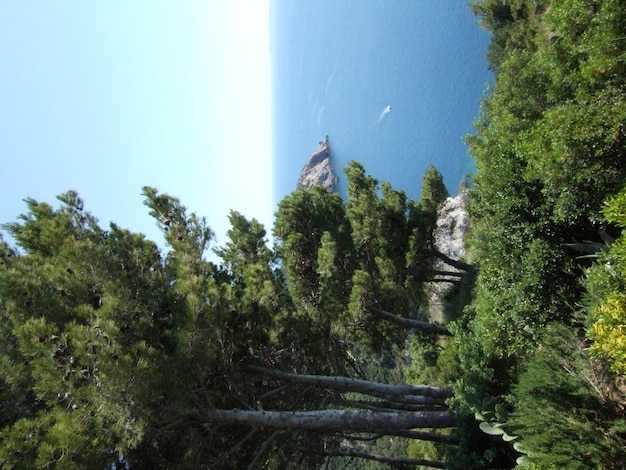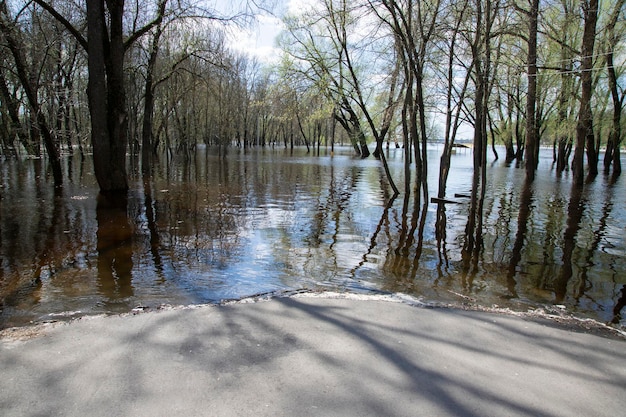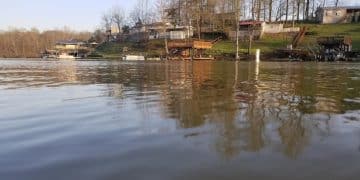How Will Climate Change Impact US National Parks?

Climate change significantly threatens US National Parks and protected areas by increasing temperatures, altering precipitation patterns, and intensifying extreme weather events, leading to habitat loss, species displacement, and infrastructure damage.
How Will Climate Change Impact US National Parks and Protected Areas? This is a critical question as these natural treasures face unprecedented challenges. From rising sea levels to more frequent wildfires, the effects of climate change are already being felt across the nation’s most cherished landscapes.
understanding the vulnerability of us national parks
US National Parks are more than just scenic landscapes; they are vital ecosystems, cultural heritage sites, and economic engines. Understanding the vulnerabilities of these parks is crucial to take climate action.
These protected areas face a wide array of climate change impacts that threaten them, including increases in natural disasters.
The rising temperatures: a gradual threat
Rising temperatures lead to heat waves. The effects of rising temperatures are multifold. It also impacts the local flora and fauna within the parks.
shifting precipitation patterns
The increase in precipitation is also unevenly distributed, leading to more droughts in the affected regions.
- Glacial melting impacting water resources.
- Changes in plant growth patterns.
- Increased risk of wildfires.
These changes can make park management more challenging with implications to the entire ecosystem.
Understanding the ecological roles of different species within these parks is crucial for helping to formulate an effective conservation strategy.

Impacts on biodiversity and ecosystems
Climate change is dramatically reshaping the biodiversity and ecosystems within national parks. Park biodiversity is affected as temperature regimes dramatically change.
As climate zones shift, areas which favored growth of certain tree species may no longer be conducive for the purpose in the coming years.
species displacement and habitat loss
One of the most visible impacts of climate change in national parks is the displacement of species and the loss of critical habitats. Suitable habitats continue to decrease.
invasive species proliferation
Changes in climate conditions can create opportunities for invasive species to establish and spread in national parks. Invasive species push out native species.
- Changes in migratory patterns of animals.
- Loss of unique plant communities.
- Increased competition for resources.
These issues make it harder for the parks’ ecosystems to adapt and survive long term.
These invasive species lead to increased challenges with keeping the park ecosystem stable and healthy.
The effect on infrastructure and access
The impacts of climate change extend beyond ecological concerns, significantly affecting the infrastructure and accessibility of US National Parks. The parks see major infrastructure and accessibility impacts.
The infrastructure can be majorly affected after the occurrence of events like a flash flood.
damage to roads and trails
Extreme weather events and changing climate patterns are causing significant damage to roads and trails within national parks. Damages to infrastructure leads to closures.
impacts on historic sites and cultural resources
Many national parks are home to historic sites and cultural resources that are vulnerable to climate change impacts. Loss of significant historical sites leads to loss of information and heritage.
- Increased maintenance costs.
- Disruption of visitor access and enjoyment.
- Risks to visitor safety.
The goal is to preserve the national park heritage for future generations.
Infrastructure investment now will certainly help deal with impacts in the future.

economic implications for local communities
The changes in climate conditions have had tremendous economic implications for communities around US National Parks. Ecotourism generates significant revenue for communities.
The economic health of these communities is closely tied to the success of the parks.
decline in tourism and recreation
Climate change impacts such as wildfires, extreme weather events, and habitat degradation can lead to a decline in tourism and recreation in national parks. This leads to a decrease in the amount of tourism income.
increased cost of park management
Managing national parks in the face of climate change requires increased investment in resources and strategies. Increased park management costs leads to decreased profitability.
- Job losses in the tourism sector.
- Reduced tax revenues for local governments.
- Challenges for small businesses reliant on park visitors.
Diversification helps insulate local economics.
Tourism can come back stronger when the issues are dealt with effectively.
conservation and adaptation strategies
Effective conservation and adaptation strategies are essential to protect US National Parks from the impacts of climate change. This involves thinking outside the box.
This can involve thinking creatively about how to help the region.
implementing ecosystem-based management
Ecosystem-based management approaches consider the entire ecosystem and its interactions to promote resilience and adaptation. Improved strategies lead to more resilient ecosystems in the long term.
enhancing climate resilience of infrastructure
Adapting infrastructure to withstand the impacts of climate change is crucial for maintaining access and protecting resources in national parks. Maintaining access is key to protecting these regions.
- Restoration of degraded habitats.
- Sustainable water management practices.
- Collaborative efforts with local communities.
Better strategies lead to more positive outcomes.
Collaborating effectively is part and parcel of the overall strategy.
policy and governance frameworks
Strong policy and governance frameworks are essential for addressing climate change impacts in US National Parks. Policy guidelines help guide all important long-term strategy.
The right policies help inform best practices overall.
strengthening legislative protections
Legislative protections play a crucial role in safeguarding national parks from climate change impacts. With this, national parks can continue to thrive.
promoting interagency collaboration
Climate change adaptation requires collaboration among various agencies and stakeholders. Improved cross-communication is key to making this happen.
- Increased funding for climate research and monitoring.
- Development of comprehensive climate adaptation plans.
- Enhanced enforcement of environmental regulations.
This will allow national parks to thrive.
More funding is definitely needed to get this process accomplished.
| Key Area | Brief Description |
|---|---|
| 🔥 Wildfires | Increased temperatures and drier conditions are leading to more frequent and intense wildfires. |
| 🌊 Sea Level Rise | Coastal parks are threatened by rising sea levels, leading to erosion and habitat loss. |
| 🌡️ Rising Temperatures | Rising temperatures are stressing ecosystems, leading to species displacement. |
| 🏞️ Infrastructure Damage | Extreme weather is damaging roads, trails, and historic sites, increasing maintenance costs. |
FAQ
▼
The main threats include rising temperatures, altered precipitation, wildfires, sea level rise, and increased extreme weather events, all of which significantly impact ecosystems and infrastructure.
▼
Rising temperatures lead to habitat loss, species displacement, and increased stress on wildlife populations, impacting their ability to survive and reproduce within their traditional ranges.
▼
Ecosystem-based management, infrastructure resilience enhancements, policy reinforcement, and interagency collaboration are strategies to help preserve national parks from the impact of climate change.
▼
Climate change can lead to declines in tourism due to wildfires, extreme weather, and habitat degradation, affecting local economies that rely on park visitors and recreational activities.
▼
Policies support legislative protections, promote interagency collaboration, increase funding for research, and enforce environmental regulations to safeguard national parks from climate change impact.
Conclusion
The effects of climate change on US National Parks are profound and far-reaching, threatening the very essence of these protected areas. Implementing conservation with sound policy frameworks is essential to protect these landscapes for future generations.





